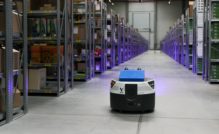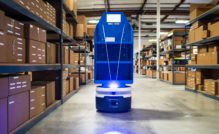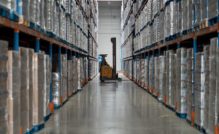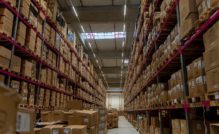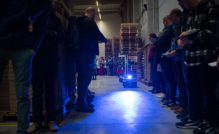The only way to accurately predict sales in promotions is by applying artificial intelligence

How to maintain optimal stock levels? How to prevent excessive allocation of money in stock and avoid losses due to expiration and other logistics costs? Being overstocked with one product can cause problems for smaller stores as there is insufficient space for different items. However, it’s worse when the product simply runs out while being promoted. Such cases are detrimental to the retailer in the eyes of the customers. The demand for a particular product may suddenly increase tenfold during promotions. Therefore, every retailer’s mistake is multiplied, especially in their turnover.
Artificial intelligence is the most accurate way to calculate sales forecasts during promotions. The challenges of conventional statistical methods, which no longer suffice in today’s challenging situations with inelastic goods, high discounts or seasonality, don’t plague AI.
“We have begun to tackle the topic of predicting promotional sales ten years ago due to our clients’ demand. Conventional solutions appeared ineffective; thus, we developed our own in-house solution. We have tested several approaches, and the AI-based one proved to be the most successful”, says Petr Bulava, responsible for the BI team and data analytics at Sluno.
How does the forecast come about?
We extract the data about particular items directly from the retailer; manufacturer data can also be used, just slightly modified. The necessary inputs include indexes of items and stores, what promotions are available, their mechanisms, how they work, whether they contain direct discounts, etc. We are particularly interested in sales history, how many items have been sold in the past and at what price. We clean the data of unreasonably extreme values and link the unit price and the corresponding daily sales.
Conditioning factors represent other inputs; for example, in the case of beverages, these include the outside temperature. Other items on sale may be cannibalised; also, the presence of a competing store may play a role. The more conditioning factors, the better. The price of the goods belongs among the necessary factors. We can determine how many products will be sold using the price.
Statistics are no longer relevant; the trees rule the day
Conventional statistical methods such as time series cannot be used for accurate calculations. That’s why we apply the Random Forest method and decision tree-based artificial intelligence.
The algorithm constructs hundreds to thousands of decision trees based on historical sales data. It applies 70% of the data to construct the trees and verifies whether it is right using the remaining 30%. If it detects a miss, it simply discards the tree. The verified trees predict the sales of a particular item. Each tree independently determines how much of that particular item will be sold. The highest represented figure, or the mean or median, is then declared a result.

Even though it may take all night to create the trees, we get the forecast quickly, within minutes. It might be a good idea to refresh the data every now and then and make new trees. Thus, new data is updated, and the forecast is even more accurate.
The algorithm doesn’t miss anything
The algorithm operates on a human approach of “look and see”. However, despite the vast amount of information, it doesn’t miss anything. It doesn’t mind high discounts or extrapolations when the new price of an item lies outside the range of the known past data. Moreover, the algorithm can identify the cross effects of discounts – cannibalisation or the halo effect. Conventional statistical methods struggle to cope with such effects.
The results are presented in the form of tables and graphs, but above all, they can be imported into the ERP of the retailer. Thus, orders for suppliers or manufacturers can be created directly based on such calculations. The forecast is very accurate.
The second half of Peter’s webinar at YouTube will reveal what a good match is and how to judge that we have hit the mark.
The second half of the webinar features examples based on actual data from our customers.
Promo Forecast AI
We called this instrument Promo Forecast Artificial Intelligence or PFAI. The system runs in the high-security cloud. We frequently encounter customers who don’t want their data to leave their company. We understand their concerns and offer an option to run the entire solution on-premise.
Process-wise, this is not the last step. The next step involves taking these calculations and processing purchase orders based on many other factors: goods on the way, expiration dates, store capacity, suppliers’ delivery terms, etc. We can also deal with such situations and will gladly write about them next time.

